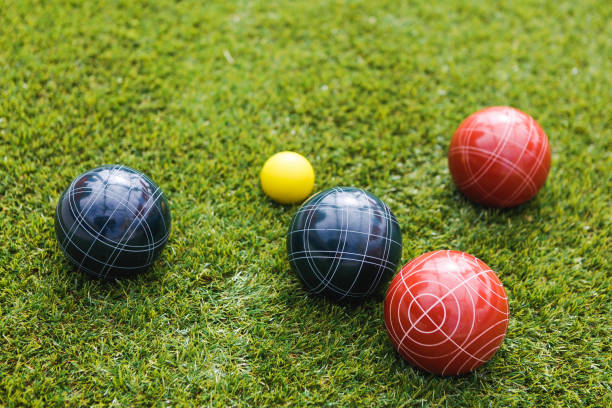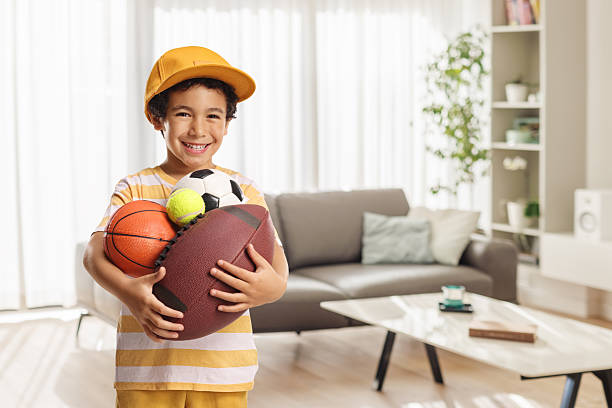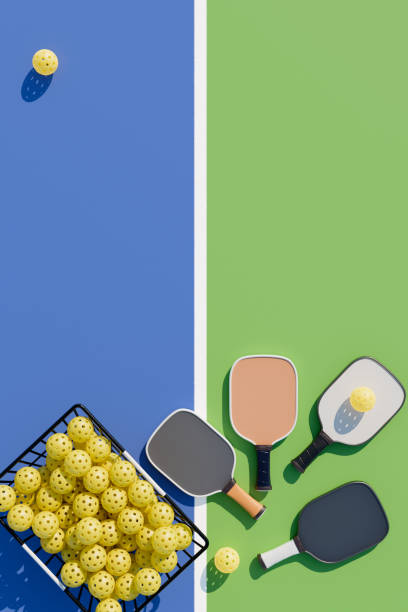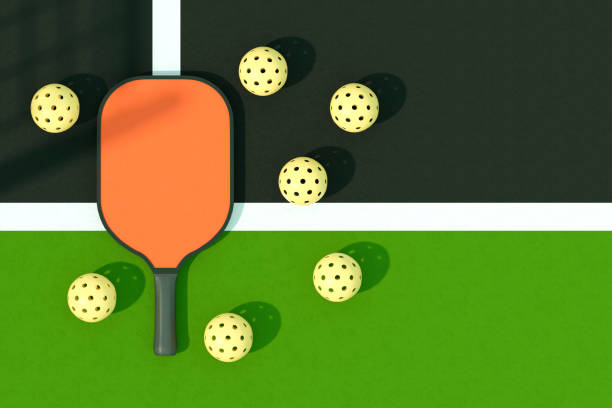Ball Size Matters More Than You Think
When you’re picking out a sports ball, size may seem like a minor consideration, but it can be a game changer. Ball size is critical when it comes to safety, skill development, and overall enjoyment of the sport. The right ball size can have a critical impact on performance, safety, and enjoyment. From small squash to large basketball, every sport has a specific size for different ages, genders, and skill levels. From a toddler’s first grip to a professional athlete’s winning move, ball size directly affects control, comfort, and confidence.
We’ll explain the impact of ball size, how to properly read and use a ball size chart, and take a deep dive into how sports ball diameters vary by sport, age group, and purpose. More importantly, we’ll reveal how choosing the right ball can promote long-term athletic development: physical, technical, and mental.

Understanding Ball Size: Basics and Standards
What Is Ball Size and Why It Varies
Ball size refers to a ball’s diameter or circumference, which varies across sports and within sports based on the player’s age and skill level. For example, a soccer ball ranges from Size 1 (smallest, for toddlers) to Size 5 (standard for adults), with sports ball diameters ranging from about 5.7 to 8.8 inches. Basketball sizes go from 5 to 7, with diameters from roughly 8.75 to 9.51 inches. These sizes are set by governing bodies like FIFA (soccer), FIBA (basketball), and ITF (tennis) to ensure consistency and fairness.
The variation exists because players of different ages and physical abilities need equipment that matches their capabilities. Smaller, lighter balls help kids develop coordination and confidence, while regulation-sized balls challenge older players to build strength and precision for competitive play.
Interpreting a Ball Size Chart
A ball size chart is your go-to tool for picking the right ball. It lists sports ball sizes by sport, diameter, and recommended age group, making it easy to find the perfect fit. Here’s a comprehensive chart for popular sports:
| Sport | Size | Diameter (inches) | Diameter (mm) | Age Group |
|---|---|---|---|---|
| Soccer | Size 1 | ~5.7-6.4 | ~145-163 | Toddlers (2-4) |
| Soccer | Size 2 | ~6.4-7.0 | ~163-178 | Young Children (3-5) |
| Soccer | Size 3 | ~7.3-7.6 | ~185-193 | Children (5-8) |
| Soccer | Size 4 | ~7.9-8.2 | ~201-208 | Older Children (8-12) |
| Soccer | Size 5 | 8.5-8.8 | 216-223 | Teenagers (12+) |
| Basketball | Size 5 | ~8.75 | ~222 | Youth (8-11) |
| Basketball | Size 6 | ~9.06 | ~230 | Women/Older Youth (11-14) |
| Basketball | Size 7 | 9.43-9.51 | 239.5-241.5 | Men (14+) |
| Volleyball | Regulation | 8.15-8.39 | 207-213 | Teens/Adults |
| Tennis | Standard | 2.575-2.700 | 65.41-68.58 | Adults |
| Baseball | Standard | 2.87-3 | 73-76 | Adults |
Note: Soccer diameters are approximate, as measurements are typically given in circumference.
This chart, sourced from reliable references like TopEndSports, helps you quickly identify the right ball for your sport and age group.
Different Sizes of Balls for Different Sports and Age Groups
Sport-by-Sport Breakdown
There are many kinds of balls we can choose to play sports and exercise, such as basketball, football, golf, etc. There are different sports ball manuals according to the type, sports goals and physical development. Therefore,each sport has unique ball size standards, often tailored to age, gender, and skill level. Here’s a detailed look:
- Soccer:
- Size 1: Circumference 15.7-16.5 inches, for ages 2-4. Ideal for toddlers to develop motor skills.
- Size 2: Circumference 18.1-18.9 inches, for ages 3-5. Great for practicing basic skills.
- Size 3: Circumference 22.4-23.6 inches, for ages 5-8. Perfect for youth leagues.
- Size 4: Circumference 24.8-25.6 inches, for ages 8-12. A transitional size for older kids.
- Size 5: Circumference 26.8-27.6 inches, for ages 12+. The standard for adult and professional play.
Source: Barça Residency Academy.
- Basketball:
- Size 5: Circumference 27.5 inches, for ages 8-11. Used in youth leagues.
- Size 6: Circumference 28.5 inches, for women and boys ages 11-14. Standard for WNBA.
- Size 7: Circumference 29.5 inches, for men ages 14+. Used in NBA and men’s college play.
Source: Spalding.
- Volleyball:
- Regulation size: Circumference 25.6-26.4 inches, for teens and adults. Lighter versions are available for kids under 12 to ease learning.
- Tennis:
- Standard ball: Diameter 2.575-2.700 inches, for adults.
- Low-compression balls for juniors:
- Red (under 8, 50% compression).
- Orange (ages 8-10, 75% compression).
- Green (ages 10-12, full compression, slower speed).
- Baseball/Softball:
- Baseball: Diameter 2.87-3 inches, for adults. Youth leagues may use softer balls.
- Softball: Fastpitch uses a 12-inch circumference ball; slowpitch uses 12.25 inches.
Matching Sizes to Age, Gender, and Purpose
Choosing the right ball size depends on the player’s age, gender, and whether the focus is recreational or competitive. For example, a 6-year-old soccer player should use a Size 3 ball to build control, while a 14-year-old male basketball player needs a Size 7 for competitive play. Women’s basketball uses Size 6, aligning with WNBA standards. Here’s a comparison table:
| Age Group | Soccer | Basketball | Volleyball | Tennis |
|---|---|---|---|---|
| Toddlers (2-4) | Size 1 | N/A | N/A | N/A |
| Children (5-8) | Size 3 | Size 5 | Lighter | Red/Orange |
| Pre-Teens (8-12) | Size 4 | Size 5/6 | Regulation | Orange/Green |
| Teens (12+) | Size 5 | Size 6/7 | Regulation | Standard/Green |
| Adults | Size 5 | Size 6/7 | Regulation | Standard |
This table ensures you can match different sizes of balls to the player’s needs, whether for fun or serious training.

Advantages and Disadvantages of Different Ball Sizes
Pros and Cons Comparison
- Smaller Balls:
- Pros: Easier to control, safer for kids, great for learning fundamentals. For example, a Size 3 soccer ball helps a 6-year-old kick accurately.
- Cons: May not prepare players for regulation sizes, limiting strength development.
- Larger/Regulation Balls:
- Pros: Match competitive standards, build endurance and strength. A Size 7 basketball prepares teens for high school play.
- Cons: Can cause poor technique or injury if used too early. For instance, a heavy Size 5 soccer ball might strain a young child’s muscles.
Impact on Sports Skill Development and Physical Growth
Early Ball Size Selection Shapes Motor Skills
Using appropriately sized balls helps children develop balance, coordination, and confidence. According to a 2020 study in the Journal of Sports Science, children aged 6–8 using scaled-down equipment—including smaller balls—showed a 20% improvement in coordination compared to peers using adult-sized gear. Smaller balls reduce the effort needed to handle them, allowing kids to focus on technique, boosting confidence and engagement.
Long-Term Impact on Physical Strength and Muscle Memory
Incorrect ball sizes can hinder physical development. Introducing a ball that’s too large or heavy can affect a child’s muscle development and joint health.Oversized balls may lead to improper form, increasing injury risk, like shoulder strain in basketball. Properly sized balls promote healthy muscle growth and correct biomechanics, setting a strong foundation for future success. For example, a Size 4 soccer ball helps 8-12-year-olds develop kicking form without overexertion.
Quote from coach:
“We see better form and fewer injuries when we gradually scale ball size by age group,” — Coach Lin, Youth Sports Academy
Amateur Play vs Professional Training: What Size Fits Best?
Which Ball Size Works Best for Practice?
In amateur play, smaller balls prioritize fun and skill-building. Youth soccer clubs often use Size 3 balls for under-8 players to encourage control. In professional training, regulation sizes are standard, but coaches may use smaller balls for drills to refine technique, like dribbling in basketball.
Real Case Studies
A youth soccer program in Charlotte, NC, reported a 15% drop in ankle injuries among under-10 players after switching to Size 3 balls, as noted by Coach Sarah Johnson: “Kids were more confident and had better control, which kept them engaged.” Similarly, a basketball camp using Size 5 balls for 9-11-year-olds saw improved shooting form, with players reporting less frustration.
Professional Standards and Training Regulations
Governing bodies like FIFA, FIBA, and ITF set strict standards. For instance, FIFA mandates Size 5 soccer balls for professional matches, while FIBA requires Size 7 for men’s and Size 6 for women’s games. Transitioning to these sizes by age 12-14 prepares athletes for competitive play.

Cost-Effectiveness and Durability: Is Size Worth the Price?
Price vs Performance
Smaller training balls often cost less, but may wear out quickly. Regulation balls tend to be more durable and offer long-term value, especially for older athletes.
Tips for smart purchasing:
- For toddlers and kids under 8: Focus on cost-friendly, lightweight materials.
- For teens and competitive players: Invest in regulation-grade balls that last longer.
Maintenance for Longevity
- Keep balls inflated to recommended pressure.
- Store in a dry, cool place.
- Clean surfaces regularly to maintain grip and texture.
Real Feedback: Coaches and Athletes on Ball Size
Youth Program Experience
Coach Angela from the Florida Soccer Academy reports:
“After switching our under-10 team to Size 4 balls, we saw a noticeable boost in passing accuracy and team confidence.”
Amateur Player Insights
Recreational player Mark, age 35:
“As a latecomer to basketball, I started with a Size 6. It made learning fundamentals less intimidating, and I didn’t feel overwhelmed.”
These real cases highlight how thoughtful ball size selection improves the user experience regardless of age or skill level.
Unanswered Questions And Practical Solutions We Provide
Small Questions Answered
- “My child is 6—should I buy a Size 3 or Size 4 soccer ball?”
A Size 3 is best for a 6-year-old, as it’s easier to kick and control, promoting proper technique. - “Can adults train with youth-size basketballs to improve technique?”
Yes, adults can use Size 5 or 6 balls for drills to refine dribbling or shooting, but regulation sizes are best for overall training. - “What happens if you use the wrong ball size long-term?”
Using an oversized ball can lead to poor habits, like improper shooting form, and increase injury risk, while undersized balls may limit strength development.
Expert Advice for Making the Right Choice
Pediatric sports specialist Dr. Emily Chen advises, “Start with a ball size that feels comfortable for the child to handle, and gradually transition to larger sizes as they grow.” Coaches and PE teachers should check league guidelines and test balls with players to ensure a good fit.
Make the Smart Choice for Growth and Performance
Ball size is more than a technical detail; it’s the cornerstone of lifelong athletic development. The right choice is a critical factor in promoting skill development, ensuring safety, and inspiring passion for the sport. From toddler sports ball sizes to professional player sizes, each size plays an important role in an athlete’s career.
🟢 Call to Action:
Use our ball size chart to select the right ball for your needs, or consult a coach or sports professional for guidance. Choosing the right ball today means better form, fewer injuries, and greater confidence tomorrow.


